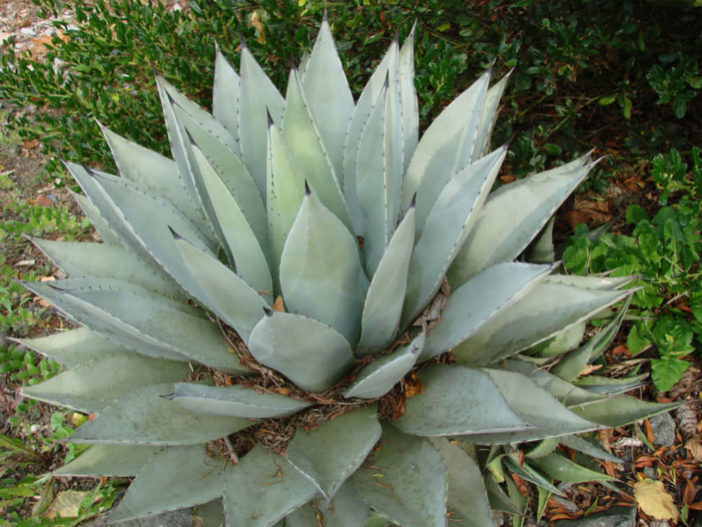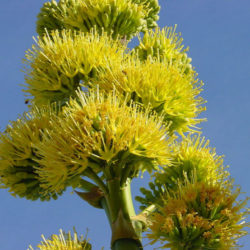Scientific Name
Agave deserti Engelm.
Common Name(s)
Desert Agave, Mescal, Century Plant, Maguey
Synonym(s)
Agave deserti subsp. deserti, Agave deserti var. deserti
Scientific Classification
Family: Asparagaceae
Subfamily: Agavoideae
Genus: Agave
Description
Agave deserti is a succulent plant that forms stemless or short-stemmed rosettes of thick, fleshy, lance-shaped leaves with sharp spines along the edges and a strong terminal spine. The leaves vary in color from grayish, gray-green, and blue-green to yellowish-green. They can grow up to 27 inches (70 cm) long and 4 inches (10 cm) wide.
The flowers are bright yellow, funnel-shaped, up to 2.4 inches (6 cm) long, and appear in summer on a paniculate inflorescence that can reach up to 20 feet (6 m) in height.

How to Grow and Care
Agave is not a difficult plant to grow. They're slow-growing and dramatic and will even thrive on a bit of neglect. If you're the type of person who likes to fuss with houseplants and water a lot, Agave is probably not the plant for you. On the other hand, if you're the type of person who likes to set it and forget it, and you have a sunny window, Agave might be the way to go. Be aware that some large varieties will eventually outgrow your room (unless you have a large greenhouse), and Agave can be aggressive. They have irritating sap and sometimes very sharp thorns that can injure small children and even pets.
In general, Agaves do not need to be repotted every year. Most species commonly found in cultivation grow very slowly and take a long time to outgrow their pot. It's also best to handle your Agave as little as possible since they do not like to be disturbed.
See more at How to Grow and Care for Agave.
Uses
Man has been harvesting and utilizing Agaves for approximately 9,000 years. The huge plant comprised a huge part of primitive man's diet. Closely related to lilies, there are three major parts that are edible: flowers, stalks or basal rosettes, and sap. Leaves are a lesser edible part of the plant.
See more at Century Plant: Edible Agave.
Origin
Agave deserti is native to desert regions in southern California, Arizona, and Baja California.
Links
- Back to genus Agave
- Succupedia: Browse succulents by Scientific Name, Common Name, Genus, Family, USDA Hardiness Zone, Origin, or cacti by Genus
Photo Gallery
Click on a photo to see a larger version.


